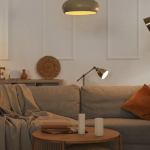
The History of Murano Glass
Murano glassmaking has a history that dates back to the 13th century, where it was a major industry in Venice. However, due to the risk of fires, the Venetian government ordered glassmakers to move to the island of Murano in the 15th century. This is where the art of glassmaking truly flourished, with Murano glassmakers experimenting with new techniques and designs that were considered to be some of the finest in Europe.
The Craft of Hand Blown Murano Glass Pendant Lights
Hand blown Murano glass pendant lights are a work of art, with intricate designs and stunning colors that will enhance any room. The process of making hand blown Murano glass involves a glassblower taking molten glass and shaping it using traditional methods. A mix of oxides and minerals is added to the glass to create custom colors, and the glassblower will then shape and mold the glass using special tools. The final product is a unique and exquisite piece of art.
The Benefits of Hand Blown Murano Glass Pendant Lights
1. Exquisite design: Hand blown Murano glass pendant lights come in a range of designs, from simple and elegant to ornate and complex. Each piece is unique and is sure to be a conversation starter.
2. Customizable: The colors and designs of Murano glass pendant lights can be customized to suit your personal style and home decor.
3. Durability: Although Murano glass may seem fragile, it is actually a durable and long-lasting material that can withstand daily use.
How to Incorporate Hand Blown Murano Glass Pendant Lights in Your Home
1. Dining room: Hang a hand blown Murano glass pendant light over your dining room table to add elegance and warmth to your meals.
2. Living room: Incorporate a Murano glass pendant light into your living room decor to create a relaxing and inviting atmosphere.
3. Bedroom: Add a touch of romance to your bedroom by installing a Murano glass pendant light above your bed.
The Future of Murano Glass
Today, Murano glassmaking is still a thriving industry, with workshops across the island producing handmade glass products. However, the industry has faced challenges in recent years due to rising costs and cheaper imitations flooding the market. To combat this, many Murano glass artists are embracing new technologies and creating innovative designs that keep the traditional craftsmanship alive while appealing to modern tastes.





